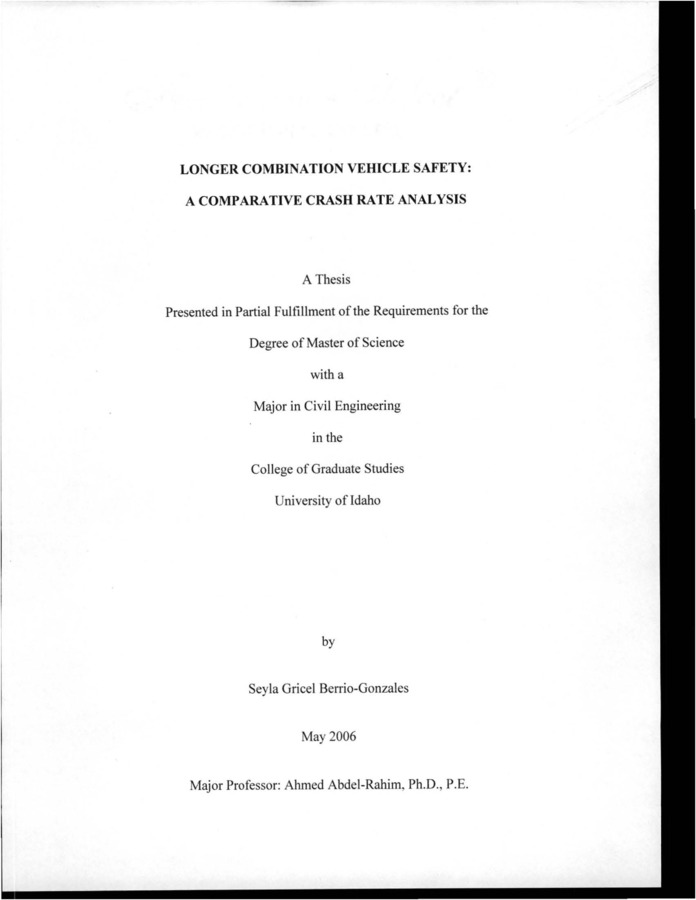Please note: this collection is no longer updated. Visit our Theses and Dissertations Collection in VERSO for all U of I ETD since 2012.
ETD PDF
Longer combination vehicle safety: a comparative crash rate analysis
Citation
Berrio-Gonzales, Seyla Gricel. (2006). Longer combination vehicle safety: a comparative crash rate analysis. Theses and Dissertations Collection, University of Idaho Library Digital Collections. https://www.lib.uidaho.edu/digital/etd/items/etd_893.html
- Title:
- Longer combination vehicle safety: a comparative crash rate analysis
- Author:
- Berrio-Gonzales, Seyla Gricel
- Date:
- 2006
- Keywords:
- civil engineering
- Program:
- Civil Engineering
- Abstract:
- Longer Combination Vehicles, a sub-class of commercial vehicles, are large trucks with two or more cargo spaces. The safety performance of LCV s is not yet fully understood since it is difficult to distinguish them from other truck types in both crash data files and count stations. Both of these data sources rely on the FHW A 13-vehicle classification that does not distinguish LCV s as particular truck types. This thesis presents current regulations for LCV s in Western States and crash trends involving LCVs are presented for Montana, Oregon, Idaho, and Utah. A method for identification of LCV s using WIM data was used to determine VMT by road and truck type in Utah and Idaho. The relative crash rates are estimated using crash data and vehicle miles traveled (VMT) and are obtained by dividing the number of crashes by the number of miles traveled by each truck type. Relative crash rates of singles, doubles and triples were compared for Idaho; and relative crash rates of singles, LCV doubles, non- LCV doubles and triples were compared for Utah. Finally, these estimated crash rates are then used to determine the relative safety ofLCVs in Idaho and Utah. The estimated crash rates in Idaho are considerably lower on interstate routes in comparison to state routes. The single unit truck shows a consistently low crash rate in both state and interstate roads. Crash rates for doubles are higher than crash rates for triples on interstate routes. In contrast, triples show higher crash rates than doubles on state routes. Overall it is shown that crashes are more likely to occur on state routes than on interstate routes. In Utah, turnpikes have the highest number of crashes per million VMT followed by Rocky Mountains and triples. Freeway doubles and singles have a substantially smaller number of crashes per million VMT. The analysis per roadway segment shows that turnpikes have higher crash rates than triples, freeways, and singles but do not surpass the crash rates of Rocky Mountains.
- Description:
- Thesis (M.S., Civil Engineering) -- University of Idaho, 2006
- Major Professor:
- Abdel-Rahim, Ahmed
- Type:
- Text
- Format Original:
- text
- Format:
- application/pdf
Rights
- Rights:
- In Copyright - Educational Use Permitted. For more information, please contact University of Idaho Library Special Collections and Archives Department at libspec@uidaho.edu.
- Standardized Rights:
- http://rightsstatements.org/vocab/InC-EDU/1.0/

